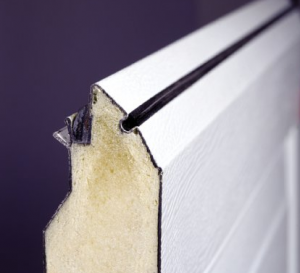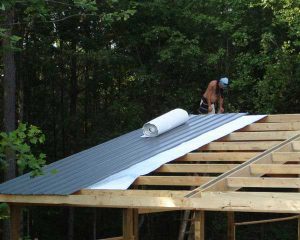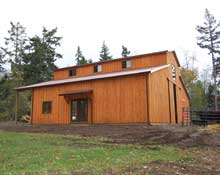I have been a proponent of machine rated lumber since I bought my first truckload to be made into trusses at Coeur d’Alene Truss (http://www.cdabuilders.com/) back in 1978. Years later I spent five terms on the Board of Directors of the Machine Stress Rated Lumber Producers Council (http://www.msrlumber.org/).
I have opined previously on the merits on machine graded lumber: https://www.hansenpolebuildings.com/2012/12/machine-graded-lumber/.
Mississippi State University™ has taken lumber testing technologies and placed them directly into the hands of the public. Please read on in this MSU article:
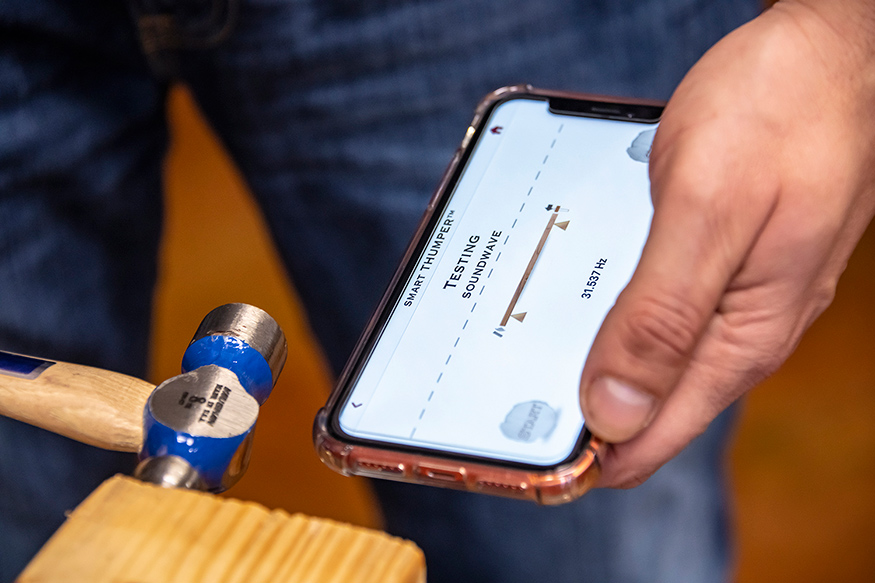
The “Smart Thumper” app, available for download in the Apple Store, uses sound waves or vibrations to determine stiffness, a quality that relates to strength, for individual pieces of lumber. (Photo by David Ammon)
STARKVILLE, Miss.—Determining the stiffest piece of lumber is now easier with a new smartphone app created by scientists in Mississippi State University’s Forest and Wildlife Research Center.
Called “Smart Thumper,” the app uses sound waves or vibrations to determine stiffness, a quality that relates to strength, for individual pieces of lumber.
Developer Dan Seale, professor in MSU’s Department of Sustainable Bioproducts, said it will help carpenters, contractors, architects, engineers, lumber mill personnel and consumers. He pointed out that it can be particularly beneficial for the do-it-yourself market.
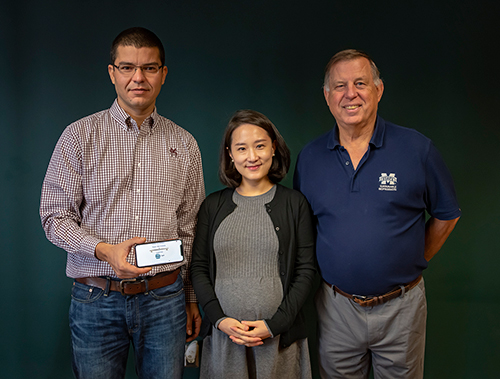
The Mississippi State team that has developed an app to determine stiffness of individual pieces of lumber include, from left, Frederico Franca, assistant research professor of sustainable bioproducts; Songyi “May” Han, an MSU sustainable bioproducts doctoral student; and professor Dan Seale. The team’s work is part of the university’s Forest and Wildlife Research Center. (Photo by David Ammon)
“All lumber is not the same, even though it may be graded the same. The grade is based on a range of values and characteristics,” Seale said. “Perhaps a consumer has a pack of lumber which meets the specification for No. 2 grade, but they need a couple of pieces for a header, something that might span the opening for a window or door. This app helps select the stiffest pieces that are least likely to sag over time,” Seale explained.
Frederico Franca, the app’s co-developer and an assistant research professor in sustainable bioproducts, first envisioned the app when he discovered that the equipment designed to test lumber costs around $84,000.
“The goal was to make something cheaper and more readily available to give consumers and stakeholders broader access to nondestructive testing equipment,” Franca said. “Now anyone with a smartphone can download the app to help pick out the stiffest pieces for whatever they are building.”
His love of physics, along with the desire to create something less expensive, fueled his idea for a smartphone app that would render lumber values through the use of sound and vibration.
“With this app, I can show you which lumber pieces are stiffer and therefore stronger,” Franca explained. “This can’t always be done through visual inspection. You need vibration or you need sound.”
Lumber mills use both visual and mechanical means to grade all types of dimensional lumber. Pieces can be tested for strength and stiffness, and the numbers are crunched through an algorithm to determine grade.
“This app can help further evaluate lumber within established grades, potentially optimizing the longevity and cost efficiency of wood structures by selecting stiffer pieces for situations that demand higher performance,” Franca said.
Also a part of the code development team is Songyi “May” Han, an MSU sustainable bioproducts doctoral student whose 2017 master’s thesis relates to marketing the smartphone app.
The app is available for download in the Apple Store. Visit https://itunes.apple.com/us/app/smart-thumber/id1436858557?mt=8.
Learn more by visiting http://smartthumper.fwrc.msstate.edu/.
